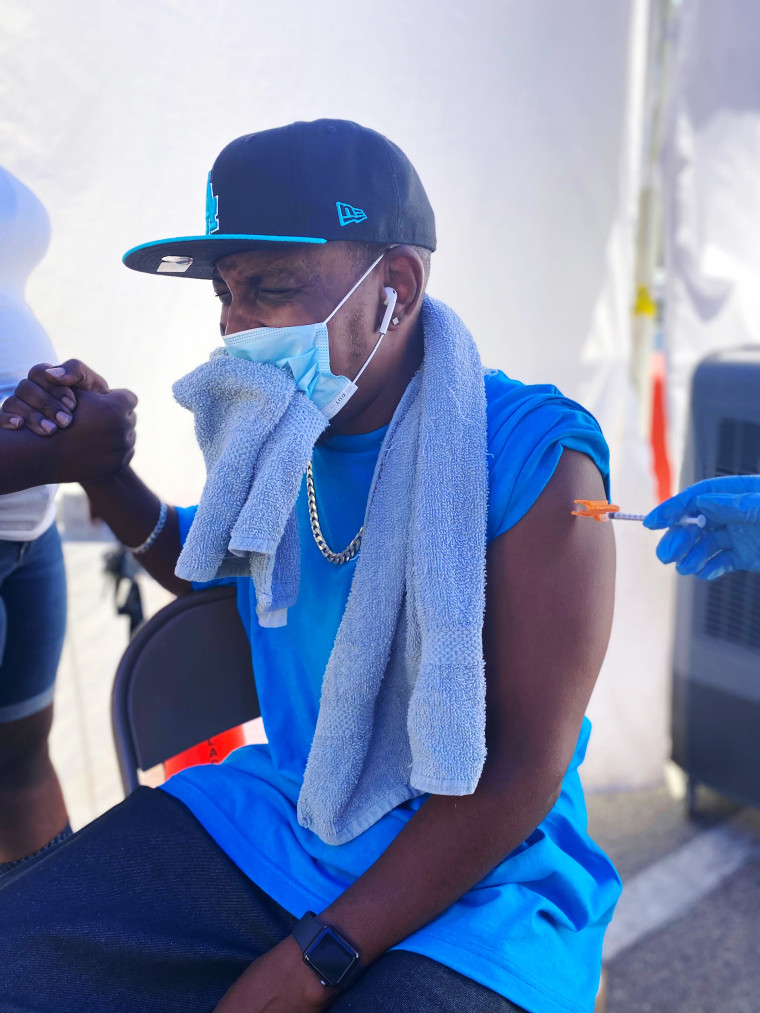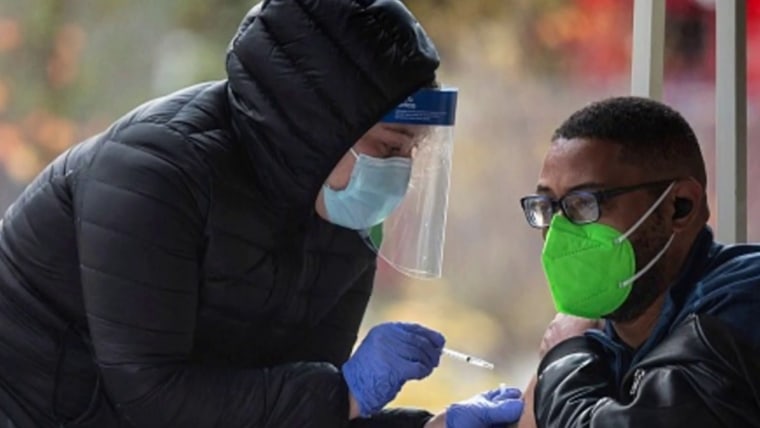Weeks after the approval of updated Covid vaccines, community health centers across the country say they are still waiting on their doses to arrive. The delays are preventing many vulnerable adults and children from getting vaccinated ahead of a potential winter wave.
Cahaba Medical Care, which has 26 community health clinics throughout Alabama, hasn’t received a single shipment of the new Covid vaccines since the rollout began in September, said Veronica Ford, a nursing manager at the center.
“We are actually waiting with bated breath,” Ford said. “We are checking daily to see if the state has received their supply so that we can get ours.”
The clinics, Ford said, treat many patients with underlying conditions that make them more susceptible to severe illness. She’s concerned that people who have already come in to get their annual flu shot won’t return to get the Covid vaccine once the shipments come in.
The shipment delays, experts say, underscore the enduring health disparities based on race and class in the U.S.
Community health centers provide federally funded free or low-cost health services, making them pivotal in providing care to underserved populations, including people with low incomes, undocumented immigrants, and many Black and brown communities.
Because the clinics rely on federal funding, they cannot afford to cover the costs of the vaccines on their own. That wasn’t a problem during the pandemic, when the federal government was the one buying and distributing the doses; Ford said that Cahaba, for example, gave about 50,000 Covid vaccinations throughout the pandemic that were supplied by the state and federal government.
Now that the government has largely stopped paying, many community health centers have had to rely on programs including the Centers for Disease Control and Prevention’s Bridge Access Program, which aims to provide free Covid vaccines to adults without insurance or with limited insurance coverage.
But shipments from that program are delayed, with community health centers facing weekslong wait times for their vaccine orders, according to Vacheria Tutson, the associate vice president of policy and regulatory affairs at the National Association of Community Health Centers.
“I’ve had health centers who have only received 100 vaccines,” Tutson said.
With limited shots on hand, clinics have had to prioritize doses for people who face the highest risk of severe illness, including older adults and those with weakened immune systems. Others will go without until the shipments arrive.
“Now that we don’t have that government access, it’s shining the light on how we really can’t afford to vaccinate uninsured and underinsured adults,” said Tutson, who added that she is hoping that the situation will improve within the next two weeks.
Delayed shipments or limited doses
Luis Borja, 70, of Los Angeles, was turned away last week when he went to get a free Covid vaccine at a local community health center in southern Los Angeles.
The clinic, run by St. John’s Community Health, said it didn’t have enough vaccines for everyone who wanted one, citing ongoing shipment delays from the Bridge Access Program.
That meant Borja, who lives below the federal poverty line, was largely out of options: He couldn’t afford to pay out of pocket, and his insurance, Medi-Cal, didn’t cover the cost of the shot at most retail pharmacies.
Borja, who is originally from El Salvador, told NBC News in an interview in Spanish that he felt “a little frustrated.”
Jim Mangia, the president and CEO of St. John’s Community Health, called it “a travesty.”
“We don’t have the resources to provide for the communities most in need,” Mangia said. “The same vaccine disparities seen before the pandemic are rearing their ugly head again.”
Almost 14 million Covid vaccines have been shipped to pharmacies and other locations since they were approved last month, according to data from the Department of Health and Human Services.
A CDC spokesperson said in a statement that the agency “has been in frequent contact with state health departments and has not been made aware of any system-wide shortages or obstacles to distribution of the updated COVID-19 vaccine to community health centers.”
Community Health Connection, in Tulsa, Oklahoma, only received a third of the vaccine doses it ordered when its shipments arrived this week, according to its CEO Jim McCarthy.
The health center requested 100 vials each from three federally funded programs, including the Bridge Access Program.
“We got 33 in each program,” McCarthy said. “So, we’re trying to find out now, does that mean that there’ll be 33 more tomorrow, or ever?”

The center serves more than 20,000 people, many of whom are Latino. McCarthy said challenges with vaccination efforts have long existed in Oklahoma, where vaccine hesitancy has increased as misinformation runs rampant.
McCarthy said that a handful of people, mostly young, have come to the center asking about the new Covid vaccine. About 96% of patients live below the federal poverty line, and many are working individuals who travel back and forth to visit family in Mexico, he said.
When Tulsa schools opened in August, before the new Covid vaccine was available, he said many parents also called the center asking about vaccines for their children.
“There were a lot of calls at that point in time about, ‘OK, our kids are going back to school — they possibly get exposed more, what do we do?’” he said. “And of course, we didn’t have the vaccine.”
Lack of demand
Other centers are facing a different problem: People don’t want to be vaccinated.
The Life Health Center in Wilmington, Delaware, which primarily serves Black patients, hasn’t received any shipments of the updated vaccine, said Sharon Farrell, a primary pediatric nurse practitioner at the clinic.
Farrell said she recently ordered 200 doses: 100 for children under 12 and 100 for children and adults ages 12 and up. The doses, she said, should arrive next week.
“I’ve never not gotten the order that I asked for, but we asked for very low numbers,” she said. “So, I don’t know. We’ll see, I guess.”
But for Farrell, the problem is less about vaccine supply and more about people’s willingness to get it. The center hasn’t had to turn anyone away yet, because no one has come in to get the vaccine.
Farrell said that feelings of mistrust in federal government regulations and vaccine mandates are not uncommon among Black and brown patients. These groups have historically been mistreated and medically abused in the past, she said.
It’s a similar story in parts of Pennsylvania, where the vaccine rollout has also been slower than expected.
The Pennsylvania Association of Community Health Centers, which represents clinics across the state that serve an estimated 1 million people a year, received just 900 Covid vaccines so far, according to Eric Kiehl, the organization’s director of policy and partnership.
While the state Health Department has prioritized getting vaccines to health centers with a larger uninsured population, health centers that serve fewer uninsured patients “are probably still on the waitlist to get some vaccine,” Kiehl said.
“Our Department of Health is not getting the amount of vaccine that they had anticipated, or at least as quickly as they thought,” Kiehl said. “But, we have not been hearing a lot from our health centers that they have patients banging on their doors to get access to the vaccine.”
Follow NBC HEALTH on Twitter & Facebook.







